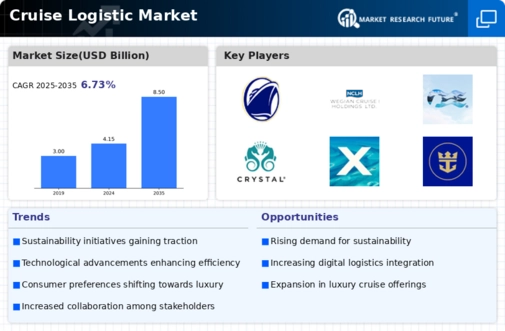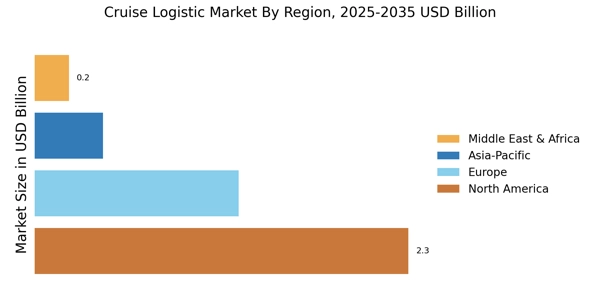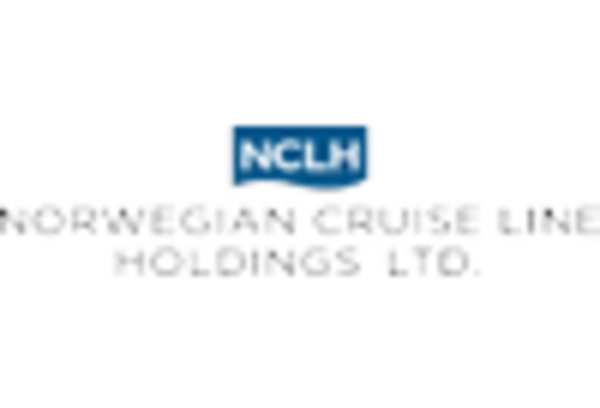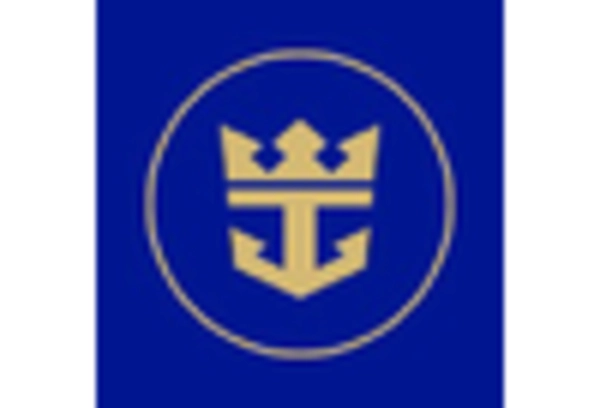Expansion of Cruise Destinations
The expansion of cruise destinations significantly impacts the Cruise Logistic Market. As cruise lines explore new and exotic locations, the logistics involved in servicing these destinations become increasingly complex. This expansion requires logistics providers to develop tailored solutions that address the unique challenges posed by different geographical regions, including infrastructure limitations and local regulations. Furthermore, the increase in diverse itineraries necessitates a more sophisticated approach to supply chain management, ensuring that all necessary provisions and equipment are delivered efficiently. The Cruise Logistic Market must adapt to these changes by enhancing its capabilities to support the growing variety of cruise offerings.
Rising Demand for Cruise Tourism
The Cruise Logistic Market experiences a notable surge in demand for cruise tourism, driven by an increasing number of travelers seeking unique vacation experiences. According to recent data, the cruise industry has seen a steady growth rate of approximately 5% annually, indicating a robust interest in cruise travel. This rising demand necessitates efficient logistics solutions to manage the influx of passengers and cargo, thereby enhancing the overall travel experience. As more cruise lines expand their offerings and itineraries, the Cruise Logistic Market must adapt to accommodate larger vessels and more complex supply chains. This trend suggests that logistics providers will need to innovate and streamline operations to meet the evolving needs of cruise operators and their customers.
Technological Advancements in Logistics
Technological advancements play a pivotal role in shaping the Cruise Logistic Market. Innovations such as automated inventory management systems, real-time tracking, and data analytics are transforming how logistics operations are conducted. These technologies enhance efficiency, reduce costs, and improve service delivery, which is crucial in an industry where timely and reliable logistics are paramount. For instance, the integration of Internet of Things (IoT) devices allows for better monitoring of cargo conditions, ensuring that supplies are delivered in optimal condition. As cruise lines increasingly rely on technology to enhance operational efficiency, the Cruise Logistic Market must keep pace with these developments to remain competitive and responsive to market demands.
Collaborative Partnerships in the Industry
Collaborative partnerships are emerging as a key driver in the Cruise Logistic Market. As cruise lines seek to optimize their operations, they are increasingly forming alliances with logistics providers, local suppliers, and port authorities. These partnerships facilitate better coordination and resource sharing, ultimately leading to improved service delivery and cost efficiencies. By working together, stakeholders can address common challenges such as capacity constraints and fluctuating demand. This collaborative approach not only enhances the overall efficiency of logistics operations but also fosters innovation within the Cruise Logistic Market, as partners share best practices and leverage each other's strengths to create more effective solutions.
Sustainability and Environmental Regulations
Sustainability initiatives and environmental regulations are becoming increasingly influential in the Cruise Logistic Market. As consumers become more environmentally conscious, cruise operators are under pressure to adopt sustainable practices, including eco-friendly logistics solutions. This shift is reflected in the growing emphasis on reducing carbon footprints and minimizing waste throughout the supply chain. Regulatory bodies are also implementing stricter guidelines regarding emissions and waste management, compelling logistics providers to innovate and comply with these standards. The Cruise Logistic Market must therefore prioritize sustainability in its operations, which may involve investing in greener technologies and practices to align with both consumer expectations and regulatory requirements.


















Leave a Comment